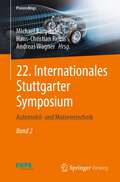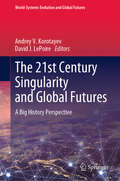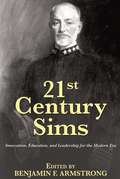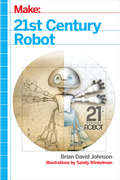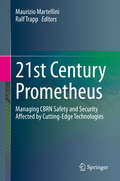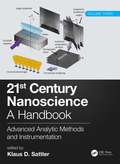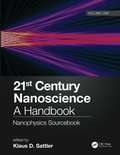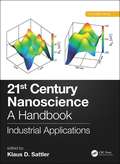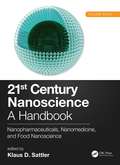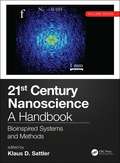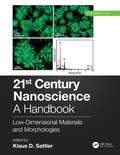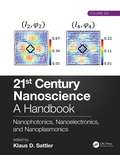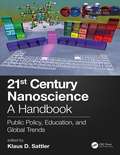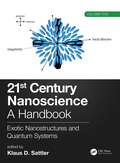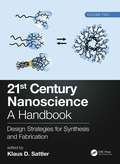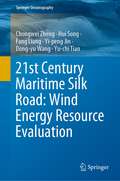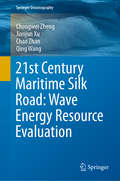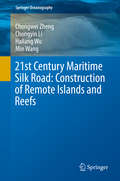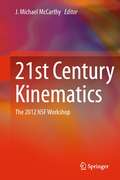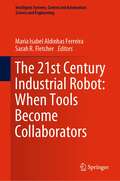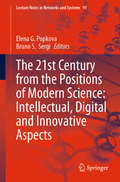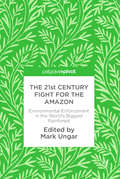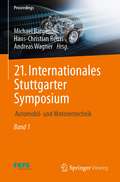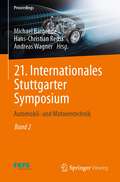- Table View
- List View
22. Internationales Stuttgarter Symposium: Automobil- und Motorentechnik (Proceedings)
by Andreas Wagner Michael Bargende Hans-Christian ReussBand IIIn einer sich rasant verändernden Welt sieht sich die Automobilindustrie fast täglichmit neuen Herausforderungen konfrontiert: Der problematischer werdende Rufdes Dieselmotors, verunsicherte Verbraucher durch die in der Berichterstattungvermischte Thematik der Stickoxid- und Feinstaubemissionen, zunehmendeKonkurrenz bei Elektroantrieben durch neue Wettbewerber, die immer schwierigerwerdende öffentlichkeitswirksame Darstellung, dass ein großer Unterschiedzwischen Prototypen, Kleinserien und einer wirklichen Großserienproduktion besteht.Dazu kommen noch die Fragen, wann die mit viel finanziellem Einsatz entwickeltenalternativen Antriebsformen tatsächlich einen Return of Invest erbringen, wer dienotwendige Ladeinfrastruktur für eine Massenmarkttauglichkeit der Elektromobilitätbauen und finanzieren wird und wie sich das alles auf die Arbeitsplätzeauswirken wird.Für die Automobilindustrie ist es jetzt wichtiger denn je, sich den Herausforderungenaktiv zu stellen und innovative Lösungen unter Beibehaltung des hohenQualitätsanspruchs der OEMs in Serie zu bringen. Die Hauptthemen sind hierbei,die Elektromobilität mit höheren Energiedichten und niedrigeren Kosten der Batterienvoranzutreiben und eine wirklich ausreichende standardisierte und zukunftssichereLadeinfrastruktur darzustellen, aber auch den Entwicklungspfad zum schadstofffreienund CO2-neutralen Verbrennungsmotor konsequent weiter zu gehen. Auch dasautomatisierte Fahren kann hier hilfreich sein, weil das Fahrzeugverhalten dann –im wahrsten Sinne des Wortes - kalkulierbarer wird.Dabei ist es für die etablierten Automobilhersteller strukturell nicht immer einfach,mit der rasanten Veränderungsgeschwindigkeit mitzuhalten. Hier haben Start-upseinen großen Vorteil: Ihre Organisationsstruktur erlaubt es, frische, unkonventionelleIdeen zügig umzusetzen und sehr flexibel zu reagieren. Schon heute werdenStart-ups gezielt gefördert, um neue Lösungen im Bereich von Komfort, Sicherheit,Effizienz und neuen Kundenschnittstellen zu finden. Neue Lösungsansätze,gepaart mit Investitionskraft und Erfahrungen, bieten neue Chancen auf dem Weg derElektromobilität, der Zukunft des Verbrennungsmotors und ganz allgemein für dasAuto der Zukunft.
The 21st Century Singularity and Global Futures: A Big History Perspective (World-Systems Evolution and Global Futures)
by Andrey V. Korotayev David J. LePoireThis book introduces a 'Big History' perspective to understand the acceleration of social, technological and economic trends towards a near-term singularity, marking a radical turning point in the evolution of our planet. It traces the emergence of accelerating innovation rates through global history and highlights major historical transformations throughout the evolution of life, humans, and civilization. The authors pursue an interdisciplinary approach, also drawing on concepts from physics and evolutionary biology, to offer potential models of the underlying mechanisms driving this acceleration, along with potential clues on how it might progress. The contributions gathered here are divided into five parts, the first of which studies historical mega-trends in relation to a variety of aspects including technology, population, energy, and information. The second part is dedicated to a variety of models that can help understand the potential mechanisms, and support extrapolation. In turn, the third part explores various potential future scenarios, along with the paths and decisions that are required. The fourth part presents philosophical perspectives on the potential deeper meaning and implications of the trend towards singularity, while the fifth and last part discusses the implications of the Search for Extraterrestrial Intelligence (SETI). Given its scope, the book will appeal to scholars from various disciplines interested in historical trends, technological change and evolutionary processes.
21st Century Sims
by Edited by Benjamin F. ArmstrongFor more than two decades at the beginning of the 20th century William S. Sims was at the forefront of naval affairs. From the revolution in naval gunnery that he led as a junior officer, to his advocacy for the Dreadnaught style all-big-gun battleship, to his development of torpedo boat and destroyer operations, he was a central figure in helping to prepare the U. S. Navy for World War I. During the war he served as the senior naval commander in Europe and was instrumental in the establishment of the convoy system that won the Battle of the Atlantic. Following the war his leadership as President of the Naval War College established the foundations of the creative and innovative Navy that would develop the operating concepts for submarines and aircraft carriers which would lead to success in World War II. Despite his dramatic impact on the U. S. Navy in the first half of the 20th century, Sims is a relatively unknown figure today. Overshadowed in our memory by the World War II generation of strategic Admirals, like Chester Nimitz and Raymond Spruance, he receives little attention from historians or professional naval officers. Despite the fact that he won a Pulitzer Prize for history, hardly anyone reads the books or articles he left as his legacy. This collection of six essays written by Sims illustrates why his thinking and leadership are relevant to the challenges faced in the 21st century. From the perils of military conservatism, to the responsibilities of the professional officer, to military downsizing and reform, he helped lay the foundations of the modern Navy. Armstrong’s introductions and analysis of these essays links them directly to the issues of innovation, professional education, and leadership that are as important at the start of this century as they were at the start of the last.
21st Century Robot
by Brian David JohnsonWhen companies develop a new technology, do they ask how it might affect the people who will actually use it? That, more or less, sums up Brian David Johnson's duties as Intel's futurist-in-residence. In this fascinating book, Johnson provides a collection of science fiction prototyping stories that attempt to answer the question.These stories focus on the same theme: scientists and thinkers exploring personal robotics as a new form of artificial intelligence. This isn't fanciful speculation. Johnson's stories are based on Intel's futurecasting research, which uses ethnographic field studies, technology research, trend data, and science fiction to develop a pragmatic vision of consumers and computing. 21st Century Robot presents science fiction designed to bring about science fact.Get real insight into technology and the future with this book. It will open your eyes.
21st Century Prometheus: Managing CBRN Safety and Security Affected by Cutting-Edge Technologies
by Maurizio Martellini Ralf TrappThis book describes the evolving CBRN risk landscape and highlights advances in the “core” CBRN technologies, including when combined with (improvised) explosive devices (CBRNe threats). It analyses how associated technologies create new safety and security risks, challenging certain assumptions that underlie current control regimes. The book also shows how technologies can be enablers for more effective strategies to mitigate these risks.21st-century safety and security risks emanating from chemical, biological, radiological and nuclear materials – whether resulting from natural events, accidents or malevolent use - are increasingly shaped by technologies that enable their development, production or use in ways that differ from the past. Artificial intelligence, the use of cyberspace, the revolution in the life sciences, new manufacturing methods, new platforms and equipment for agent delivery, hypersonic weapons systems, information tools utilised in hybrid warfare – these and other technologies are reshaping the global security environment and CBRN landscape. They are leading to a growing potential for highly targeted violence, and they can lead to greater instability and vulnerability worldwide. At the same time, technology offers solutions to manage CBRN risks. Examples are faster detection, more accurate characterisation of the nature and origin of CBRN agents, new forensic investigation methods, or new medical treatments for victims of CBRN incidents. New educational concepts help to foster a culture of responsibility in science and technology and strengthen governance. New training methods help develop practical skills to manage CBRN risks more effectively.The book concludes that there is a growing need for a holistic framework towards CBRN risk mitigation. Traditional arms control mechanisms such as global, regional or bilateral treaties and export controls are still needed, as they provide a necessary legal and institutional framework. But laws and technology denial alone will not suffice, and institutional mechanisms can at times be weak. Given the pace of technological progress and the diffusion of critical knowledge, tools and materials, policymakers must accept that CBRN risks cannot be eliminated altogether. Instead, society has to learn to manage these risks and develop resilience against them. This requires a “softer”, broadly based multi-stakeholder approach involving governments, industry, the research and development communities, educators, and civil society. Furthermore, educating policymakers that cutting-edge technologies may seriously affect global strategic stability could create incentives for developing a more creative and contemporary arms control strategy that fosters cooperation rather than incremental polarisation.
21st Century Nanoscience - A Handbook: Advanced Analytic Methods and Instrumentation (Volume 3) (21st Century Nanoscience)
by Klaus D. SattlerThis up-to-date reference is the most comprehensive summary of the field of nanoscience and its applications. It begins with fundamental properties at the nanoscale and then goes well beyond into the practical aspects of the design, synthesis, and use of nanomaterials in various industries. It emphasizes the vast strides made in the field over the past decade – the chapters focus on new, promising directions as well as emerging theoretical and experimental methods. The contents incorporate experimental data and graphs where appropriate, as well as supporting tables and figures with a tutorial approach.
21st Century Nanoscience – A Handbook: Nanophysics Sourcebook (Volume One) (21st Century Nanoscience)
by Klaus D. SattlerThis up-to-date reference is the most comprehensive summary of the field of nanoscience and its applications. It begins with fundamental properties at the nanoscale and then goes well beyond into the practical aspects of the design, synthesis, and use of nanomaterials in various industries. It emphasizes the vast strides made in the field over the past decade – the chapters focus on new, promising directions as well as emerging theoretical and experimental methods. The contents incorporate experimental data and graphs where appropriate, as well as supporting tables and figures with a tutorial approach.
21st Century Nanoscience – A Handbook: Industrial Applications (Volume Nine) (21st Century Nanoscience)
by Klaus D. SattlerThis 21st Century Nanoscience Handbook will be the most comprehensive, up-to-date large reference work for the field of nanoscience. Handbook of Nanophysics by the same editor published in the fall of 2010 and was embraced as the first comprehensive reference to consider both fundamental and applied aspects of nanophysics. This follow-up project has been conceived as a necessary expansion and full update that considers the significant advances made in the field since 2010. It goes well beyond the physics as warranted by recent developments in the field. This ninth volume in a ten-volume set covers industiral applications. Key Features: Provides the most comprehensive, up-to-date large reference work for the field. Chapters written by international experts in the field. Emphasises presentation and real results and applications. This handbook distinguishes itself from other works by its breadth of coverage, readability and timely topics. The intended readership is very broad, from students and instructors to engineers, physicists, chemists, biologists, biomedical researchers, industry professionals, governmental scientists, and others whose work is impacted by nanotechnology. It will be an indispensable resource in academic, government, and industry libraries worldwide. The fields impacted by nanophysics extend from materials science and engineering to biotechnology, biomedical engineering, medicine, electrical engineering, pharmaceutical science, computer technology, aerospace engineering, mechanical engineering, food science, and beyond.
21st Century Nanoscience – A Handbook: Nanopharmaceuticals, Nanomedicine, and Food Nanoscience (Volume Eight) (21st Century Nanoscience)
by Klaus D. SattlerThis 21st Century Nanoscience Handbook will be the most comprehensive, up-to-date large reference work for the field of nanoscience. Handbook of Nanophysics by the same editor published in the fall of 2010 and was embraced as the first comprehensive reference to consider both fundamental and applied aspects of nanophysics. This follow-up project has been conceived as a necessary expansion and full update that considers the significant advances made in the field since 2010. It goes well beyond the physics as warranted by recent developments in the field. This eighth volume in a ten-volume set covers nanopharmaceuticals, nanomedicine, and food nanoscience. Key Features: Provides the most comprehensive, up-to-date large reference work for the field. Chapters written by international experts in the field. Emphasises presentation and real results and applications. This handbook distinguishes itself from other works by its breadth of coverage, readability and timely topics. The intended readership is very broad, from students and instructors to engineers, physicists, chemists, biologists, biomedical researchers, industry professionals, governmental scientists, and others whose work is impacted by nanotechnology. It will be an indispensable resource in academic, government, and industry libraries worldwide. The fields impacted by nanophysics extend from materials science and engineering to biotechnology, biomedical engineering, medicine, electrical engineering, pharmaceutical science, computer technology, aerospace engineering, mechanical engineering, food science, and beyond.
21st Century Nanoscience – A Handbook: Bioinspired Systems and Methods (Volume Seven) (21st Century Nanoscience)
by Klaus D. SattlerThis 21st Century Nanoscience Handbook will be the most comprehensive, up-to-date large reference work for the field of nanoscience. Handbook of Nanophysics by the same editor published in the fall of 2010 and was embraced as the first comprehensive reference to consider both fundamental and applied aspects of nanophysics. This follow-up project has been conceived as a necessary expansion and full update that considers the significant advances made in the field since 2010. It goes well beyond the physics as warranted by recent developments in the field. This seventh volume in a ten-volume set covers bioinspired systems and methods. Key Features: Provides the most comprehensive, up-to-date large reference work for the field. Chapters written by international experts in the field. Emphasises presentation and real results and applications. This handbook distinguishes itself from other works by its breadth of coverage, readability and timely topics. The intended readership is very broad, from students and instructors to engineers, physicists, chemists, biologists, biomedical researchers, industry professionals, governmental scientists, and others whose work is impacted by nanotechnology. It will be an indispensable resource in academic, government, and industry libraries worldwide. The fields impacted by nanophysics extend from materials science and engineering to biotechnology, biomedical engineering, medicine, electrical engineering, pharmaceutical science, computer technology, aerospace engineering, mechanical engineering, food science, and beyond.
21st Century Nanoscience – A Handbook: Low-Dimensional Materials and Morphologies (Volume Four) (21st Century Nanoscience)
by Klaus D. Sattler21st Century Nanoscience - A Handbook: Low-Dimensional Materials and Morphologies (Volume 4) will be the most comprehensive, up-to-date large reference work for the field of nanoscience. Handbook of Nanophysics by the same editor published in the fall of 2010 and was embraced as the first comprehensive reference to consider both fundamental and applied aspects of nanophysics. This follow-up project has been conceived as a necessary expansion and full update that considers the significant advances made in the field since 2010. It goes well beyond the physics as warranted by recent developments in the field. This fourth volume in a ten-volume set covers low-dimensional materials and morphologies. Key Features: Provides the most comprehensive, up-to-date large reference work for the field. Chapters written by international experts in the field. Emphasises presentation and real results and applications. This handbook distinguishes itself from other works by its breadth of coverage, readability and timely topics. The intended readership is very broad, from students and instructors to engineers, physicists, chemists, biologists, biomedical researchers, industry professionals, governmental scientists, and others whose work is impacted by nanotechnology. It will be an indispensable resource in academic, government, and industry libraries worldwide. The fields impacted by nanophysics extend from materials science and engineering to biotechnology, biomedical engineering, medicine, electrical engineering, pharmaceutical science, computer technology, aerospace engineering, mechanical engineering, food science, and beyond.
21st Century Nanoscience – A Handbook: Nanophotonics, Nanoelectronics, and Nanoplasmonics (Volume Six) (21st Century Nanoscience)
by Klaus D. Sattler21st Century Nanoscience - A Handbook: Nanophotonics, Nanoelectronics, and Nanoplasmonics (Volume 6) will be the most comprehensive, up-to-date large reference work for the field of nanoscience. Handbook of Nanophysics by the same editor published in the fall of 2010 and was embraced as the first comprehensive reference to consider both fundamental and applied aspects of nanophysics. This follow-up project has been conceived as a necessary expansion and full update that considers the significant advances made in the field since 2010. It goes well beyond the physics as warranted by recent developments in the field. This sixth volume in a ten-volume set covers nanophotonics, nanoelectronics, and nanoplasmonics. Key Features: Provides the most comprehensive, up-to-date large reference work for the field. Chapters written by international experts in the field. Emphasises presentation and real results and applications. This handbook distinguishes itself from other works by its breadth of coverage, readability and timely topics. The intended readership is very broad, from students and instructors to engineers, physicists, chemists, biologists, biomedical researchers, industry professionals, governmental scientists, and others whose work is impacted by nanotechnology. It will be an indispensable resource in academic, government, and industry libraries worldwide. The fields impacted by nanophysics extend from materials science and engineering to biotechnology, biomedical engineering, medicine, electrical engineering, pharmaceutical science, computer technology, aerospace engineering, mechanical engineering, food science, and beyond.
21st Century Nanoscience – A Handbook: Public Policy, Education, and Global Trends (Volume Ten) (21st Century Nanoscience)
by Klaus D. SattlerThis up-to-date reference is the most comprehensive summary of the field of nanoscience and its applications. It begins with fundamental properties at the nanoscale and then goes well beyond into the practical aspects of the design, synthesis, and use of nanomaterials in various industries.
21st Century Nanoscience – A Handbook: Exotic Nanostructures and Quantum Systems (Volume Five) (21st Century Nanoscience)
by Klaus D. SattlerThis 21st Century Nanoscience Handbook will be the most comprehensive, up-to-date large reference work for the field of nanoscience. Handbook of Nanophysics, by the same editor, published in the fall of 2010, embraced as the first comprehensive reference to consider both fundamental and applied aspects of nanophysics. This follow-up project has been conceived as a necessary expansion and full update that considers the significant advances made in the field since 2010. It goes well beyond the physics as warranted by recent developments in the field. The fifth volume in a ten-volume set covers exotic nanostructures and quantum systems. Key Features: Provides the most comprehensive, up-to-date large reference work for the field. Chapters written by international experts in the field. Emphasises presentation and real results and applications. This handbook distinguishes itself from other works by its breadth of coverage, readability and timely topics. The intended readership is very broad, from students and instructors to engineers, physicists, chemists, biologists, biomedical researchers, industry professionals, governmental scientists, and others whose work is impacted by nanotechnology. It will be an indispensable resource in academic, government, and industry libraries worldwide. The fields impacted by nanoscience extend from materials science and engineering to biotechnology, biomedical engineering, medicine, electrical engineering, pharmaceutical science, computer technology, aerospace engineering, mechanical engineering, food science, and beyond.
21st Century Nanoscience – A Handbook: Design Strategies for Synthesis and Fabrication (Volume Two) (21st Century Nanoscience)
by Klaus D. SattlerThis up-to-date reference is the most comprehensive summary of the field of nanoscience and its applications. It begins with fundamental properties at the nanoscale and then goes well beyond into the practical aspects of the design, synthesis, and use of nanomaterials in various industries. It emphasizes the vast strides made in the field over the past decade – the chapters focus on new, promising directions as well as emerging theoretical and experimental methods. The contents incorporate experimental data and graphs where appropriate, as well as supporting tables and figures with a tutorial approach.
21st Century Maritime Silk Road: Wind Energy Resource Evaluation (Springer Oceanography)
by Chongwei Zheng Hui Song Fang Liang Yi-peng Jin Dong-yu Wang Yu-chi TianThis book aims to establish a wind energy evaluation system, to provide scientific reference for site selection, daily operation and long-term planning of wind power generation, thus to make contribution to breaking the shackles of power shortage. Firstly, it presents the advantages and disadvantages of offshore wind power, then further discusses about the status quo and challenges for wind power programs along the Maritime Silk Road and offer suggestions. A wind energy evaluation system was proposed with the Maritime Silk Road as a case study, including climatic features of wind power (temporal-spatial distribution), long-term climatic trend and mechanism, short-term forecast of wind energy, mid- and long-term projection of wind energy, technology of wind energy evaluation on key point or vital region and offshore wind energy dataset construction, to provide systematic and scientific reference for wind power evaluation and utilization.This book is one of the series of publications on 21st century Maritime Silk Road (shortened as “Maritime Silk Road”). It covers the characteristics of the marine environment and marine renewable energy, remote islands and reefs construction, climate change, early warning of wave disasters, legal escort, marine environment and energy big data construction, etc., contributing to the safe and efficient construction of the Maritime Silk Road. It aims to improve our knowledge of the ocean, thus, to improve the capacity for marine construction, enhance the viability of remote islands and reefs, ease the energy crisis and protect the ecological environment, improve the quality of life of residents along the Maritime Silk Road, and protect the rights, interests of the countries and regions participating in the construction of the Maritime Silk Road. It is a valuable reference for decision-makers, researchers, and marine engineers working in the related fields.
21st Century Maritime Silk Road: Wave Energy Resource Evaluation (Springer Oceanography)
by Chongwei Zheng Jianjun Xu Chao Zhan Qing WangThis book focuses on the evaluation of wave energy in the Maritime Silk Road. Firstly, it compares wave energy and other main energy sources, and then discusses the various disadvantages. It also presents the current research and the difficulties of wave energy evaluation, and systematically analyzes the climatic characteristics of the wave energy, including the temporal–spatial distribution and climatic trend of a series of key factors (e.g. wave power density, availability, richness, stability, energy direction, energy storage). It then describes the design of a short-term forecasting scheme and a long-term projection scheme of wave energy suitable for the Maritime Silk Road, to serve as a plan for the daily operation and long-term development of wave energy. Further, it highlights the wave energy analysis and decision-making in the context of the remote islands and reefs, using Sri Lanka is taken as a case study. Lastly, it presents the first wave energy resource dataset for the Maritime Silk Road.This book is one of a series of publications on the 21st century Maritime Silk Road (shortened as “Maritime Silk Road”) that covers the characteristics of the marine environment and marine new energy, remote islands and reef construction, climate change, early warning of wave disasters, legal escort, marine environment and energy big data construction, contributing to the safe and efficient construction of the Maritime Silk Road. It aims to improve our knowledge of the ocean, and so improve the capacity for marine construction, enhance the viability of remote islands and reefs, ease the energy crisis and protect the ecological environment and improve the quality of life of residents along the Maritime Silk Road, as well as to protect the rights, and interests of the countries and regions participating in the construction of the Maritime Silk Road. This book is a valuable reference resource for decision-makers, researchers, and marine engineers working in the related fields.
21st Century Maritime Silk Road: Construction of Remote Islands and Reefs (Springer Oceanography)
by Chongwei Zheng Chongyin Li Hailang Wu Min WangThis book focuses on the construction of remote islands and reefs in the Maritime Silk Road. Firstly, it analyzes the functions, necessity and difficulties of the construction of remote islands and reefs; then provides corresponding countermeasures. According to the urgent demand of electricity and freshwater, it focus on wave and offshore wind energy evaluation of the important remote islands and reefs of the Maritime Silk Road, providing reference for the choice of location of power plants, daily operation and long term plan of wave/wind power generation. Several important key points are selected in the case study to realize their electricity and freshwater self-sufficiency and thus to improve their viability. This book also presents the marine characteristics (especially hazardous elements) under the demands of island runway construction and marine new energy development, to promote safe and efficient implementation of the remote islands and reefs construction. This book is one of the series of publications on the 21st Century Maritime Silk Road (shortened as “Maritime Silk Road”). It covers the characteristics of the marine environment and marine new energy, remote islands and reefs construction, climate change, early warning of wave disasters, legal escort, marine environment and energy big data construction, etc. contributing to the safe and efficient construction of the Maritime Silk Road. It aims to improve our knowledge of the ocean, thus to improve the capacity for marine construction, enhance the viability of remote islands and reefs, ease the energy crisis and protect the ecological environment, improve the quality of life of residents along the Maritime Silk Road, and protect the rights, interests of the countries and regions participating in the construction of the Maritime Silk Road. It will be a valuable reference for decision-makers, researchers, and marine engineers working in the related fields.
21st Century Kinematics: The 2012 NSF Workshop
by J. Michael Mccarthy21st Century Kinematics focuses on algebraic problems in the analysis and synthesis of mechanisms and robots, compliant mechanisms, cable-driven systems and protein kinematics. The specialist contributors provide the background for a series of presentations at the 2012 NSF Workshop. The text shows how the analysis and design of innovative mechanical systems yield increasingly complex systems of polynomials, characteristic of those systems. In doing so, it takes advantage of increasingly sophisticated computational tools developed for numerical algebraic geometry and demonstrates the now routine derivation of polynomial systems dwarfing the landmark problems of even the recent past. The 21st Century Kinematics workshop echoes the NSF-supported 1963 Yale Mechanisms Teachers Conference that taught a generation of university educators the fundamental principles of kinematic theory. As such these proceedings will provide admirable supporting theory for a graduate course in modern kinematics and should be of considerable interest to researchers in mechanical design, robotics or protein kinematics or who have a broader interest in algebraic geometry and its applications.
The 21st Century Industrial Robot: When Tools Become Collaborators (Intelligent Systems, Control and Automation: Science and Engineering #81)
by Maria Isabel Aldinhas Ferreira Sarah R. FletcherThis book aims to discuss the technical and ethical challenges posed by the present technological framework and to highlight the fundamental role played by human-centred design and human factors in the definition of robotic architectures for human–robot collaboration.The book gives an updated overview of the most recent robotic technology, conceived and designed to collaborate with human beings in industrial working scenarios. The technological development of robotics over the last years and the fast evolution of AI, machine learning and IoT have paved the way for applications that extend far beyond the typical use of robots performing repetitive tasks in exclusive spaces. In this new technological paradigm that is expected to drive the robotics market in the coming years, robots and workers will coexist in the same workplace, sharing not only this lived space, but also the roles and functions inherent to a process of production, merging the benefits of automated and manual performing. However, having robots cooperating in real time with workers, responding in a physical, psychological and social adequate way, requires a human-centred design that not only calls for high safety standards regulating the quality of human–robot interaction, but also demands the robot's fine-grained perception and awareness of the dynamics of its surrounding environment, namely the behaviours of their human peers—their expected actions/responses—fostering the necessary collaborative efforts towards the accomplishment of the tasks to be executed.
The 21st Century from the Positions of Modern Science: Intellectual, Digital and Innovative Aspects (Lecture Notes in Networks and Systems #91)
by Elena G. Popkova Bruno S. SergiThese proceedings gather the best papers presented at the “10th International Scientific and Practical Conference – the 21st Century from the Positions of Modern Science: Intellectual, Digital and Innovative Aspects,” which was organized by the non-profit organization “Institute of Scientific Communications.” The conference took place on May 23–24 in Nizhny Novgorod, Russia, with support from Minin Nizhny Novgorod State Pedagogical University. The chief advantage of these proceedings are their multidisciplinary character – they include articles and empirical studies addressing various fields, including economics, the social sciences, and law. Accordingly, the target audience is broad, covering scholars, researchers, independent experts, entrepreneurs, and government workers, who are interested in issues concerning: measuring and accelerating socio-economic development; the formation and evolution of the digital society and digital economy; the role of economic systems and economic subjects in the 21st-century technological revolution (the fourth industrial revolution); development and implementation of AI; development and application of intellectual resources in economic activities; and innovations in the economy.
The 21st Century Fight for the Amazon
by Mark UngarThis book is the most updated and comprehensive look at efforts to protect the Amazon, home to half of the world's remaining tropical forests. In the past five years, the Basin's countries have become the cutting edge of environmental enforcement through formation of constitutional protections, military operations, stringent laws, police forces, judicial procedures and societal efforts that together break through barriers that have long restrained decisive action. Even such advances, though, struggle to curb devastation by oil extraction, mining, logging, dams, pollution, and other forms of ecocide. In every country, environmental protection is crippled by politics, bureaucracy, unclear laws, untrained officials, small budgets, regional rivalries, inter-ministerial competition, collusion with criminals, and the global demand for oils and minerals. Countries are better at creating environmental agencies, that is, than making sure that they work. This book explains why, with country studies written by those on the front lines--from national enforcement directors to biologists and activists.
21st Century Ellis
by Edited by B. A. FriedmanFor years, the Marine Corps has touted the prescience of Lieutenant Colonel "Pete” Ellis, USMC, who predicted in 1921 that the United States would fight Japan and how the Pacific Theater would be won. Now, for the first time, those predictions and other works by the "amphibious prophet” are available in print. Included is two works by Ellis on naval and amphibious operations, including Advanced Base Operations in Micronesia, the study of tactics and operations in the Pacific Ocean that the United States Navy and Marine Corps would use to win the war against Imperial Japan. Ellis describes the form and functions of a modern Marine Corps designed to win its Nation’s battles. Ellis’ ideas about how the Marine Corps should fight are still in use throughout the world today. Ellis’ ideas on amphibious operations are well known, but his ideas on counterinsurgency and conventional war have been overshadowed and forgotten. Ellis wrote two articles based on his warfighting experiences in the Philippines and as part of the American Expeditionary Force in Europe during World War I. These articles, last published in the early 1920’s, are both republished in this book and show Ellis as a prescient thinker who was ahead of his time. Ellis identifies concepts that the U. S. military struggles with even today, and that other thinkers would not identify for decades after Ellis’ death. Also included are six essays by the editor, introducing the ideas of Pete Ellis and putting them in a modern context. As the United States turns its focus to the Pacific, Ellis’ ideas can inform policymakers on the dynamics of strategy and warfare in the vast reaches of the Pacific Ocean. Edited by Captain B. A. Friedman, USMC, 21st Century Ellis reveals the strategic insights of Pete Ellis for then and now.
21. Internationales Stuttgarter Symposium: Automobil- und Motorentechnik (Proceedings)
by Andreas Wagner Michael Bargende Hans-Christian ReussBand IIn einer sich rasant verändernden Welt sieht sich die Automobilindustrie fast täglichmit neuen Herausforderungen konfrontiert: Der problematischer werdende Rufdes Dieselmotors, verunsicherte Verbraucher durch die in der Berichterstattungvermischte Thematik der Stickoxid- und Feinstaubemissionen, zunehmendeKonkurrenz bei Elektroantrieben durch neue Wettbewerber, die immer schwierigerwerdende öffentlichkeitswirksame Darstellung, dass ein großer Unterschiedzwischen Prototypen, Kleinserien und einer wirklichen Großserienproduktion besteht.Dazu kommen noch die Fragen, wann die mit viel finanziellem Einsatz entwickeltenalternativen Antriebsformen tatsächlich einen Return of Invest erbringen, wer dienotwendige Ladeinfrastruktur für eine Massenmarkttauglichkeit der Elektromobilitätbauen und finanzieren wird und wie sich das alles auf die Arbeitsplätzeauswirken wird.Für die Automobilindustrie ist es jetzt wichtiger denn je, sich den Herausforderungenaktiv zu stellen und innovative Lösungen unter Beibehaltung des hohenQualitätsanspruchs der OEMs in Serie zu bringen. Die Hauptthemen sind hierbei,die Elektromobilität mit höheren Energiedichten und niedrigeren Kosten der Batterienvoranzutreiben und eine wirklich ausreichende standardisierte und zukunftssichereLadeinfrastruktur darzustellen, aber auch den Entwicklungspfad zum schadstofffreienund CO2-neutralen Verbrennungsmotor konsequent weiter zu gehen. Auch dasautomatisierte Fahren kann hier hilfreich sein, weil das Fahrzeugverhalten dann –im wahrsten Sinne des Wortes - kalkulierbarer wird.Dabei ist es für die etablierten Automobilhersteller strukturell nicht immer einfach,mit der rasanten Veränderungsgeschwindigkeit mitzuhalten. Hier haben Start-upseinen großen Vorteil: Ihre Organisationsstruktur erlaubt es, frische, unkonventionelleIdeen zügig umzusetzen und sehr flexibel zu reagieren. Schon heute werdenStart-ups gezielt gefördert, um neue Lösungen im Bereich von Komfort, Sicherheit,Effizienz und neuen Kundenschnittstellen zu finden. Neue Lösungsansätze,gepaart mit Investitionskraft und Erfahrungen, bieten neue Chancen auf dem Weg derElektromobilität, der Zukunft des Verbrennungsmotors und ganz allgemein für dasAuto der Zukunft.
21. Internationales Stuttgarter Symposium: Automobil- und Motorentechnik (Proceedings)
by Andreas Wagner Michael Bargende Hans-Christian ReussBand IIIn einer sich rasant verändernden Welt sieht sich die Automobilindustrie fast täglichmit neuen Herausforderungen konfrontiert: Der problematischer werdende Rufdes Dieselmotors, verunsicherte Verbraucher durch die in der Berichterstattungvermischte Thematik der Stickoxid- und Feinstaubemissionen, zunehmendeKonkurrenz bei Elektroantrieben durch neue Wettbewerber, die immer schwierigerwerdende öffentlichkeitswirksame Darstellung, dass ein großer Unterschiedzwischen Prototypen, Kleinserien und einer wirklichen Großserienproduktion besteht.Dazu kommen noch die Fragen, wann die mit viel finanziellem Einsatz entwickeltenalternativen Antriebsformen tatsächlich einen Return of Invest erbringen, wer dienotwendige Ladeinfrastruktur für eine Massenmarkttauglichkeit der Elektromobilitätbauen und finanzieren wird und wie sich das alles auf die Arbeitsplätzeauswirken wird.Für die Automobilindustrie ist es jetzt wichtiger denn je, sich den Herausforderungenaktiv zu stellen und innovative Lösungen unter Beibehaltung des hohenQualitätsanspruchs der OEMs in Serie zu bringen. Die Hauptthemen sind hierbei,die Elektromobilität mit höheren Energiedichten und niedrigeren Kosten der Batterienvoranzutreiben und eine wirklich ausreichende standardisierte und zukunftssichereLadeinfrastruktur darzustellen, aber auch den Entwicklungspfad zum schadstofffreienund CO2-neutralen Verbrennungsmotor konsequent weiter zu gehen. Auch dasautomatisierte Fahren kann hier hilfreich sein, weil das Fahrzeugverhalten dann –im wahrsten Sinne des Wortes - kalkulierbarer wird.Dabei ist es für die etablierten Automobilhersteller strukturell nicht immer einfach,mit der rasanten Veränderungsgeschwindigkeit mitzuhalten. Hier haben Start-upseinen großen Vorteil: Ihre Organisationsstruktur erlaubt es, frische, unkonventionelleIdeen zügig umzusetzen und sehr flexibel zu reagieren. Schon heute werdenStart-ups gezielt gefördert, um neue Lösungen im Bereich von Komfort, Sicherheit,Effizienz und neuen Kundenschnittstellen zu finden. Neue Lösungsansätze,gepaart mit Investitionskraft und Erfahrungen, bieten neue Chancen auf dem Weg derElektromobilität, der Zukunft des Verbrennungsmotors und ganz allgemein für dasAuto der Zukunft.
